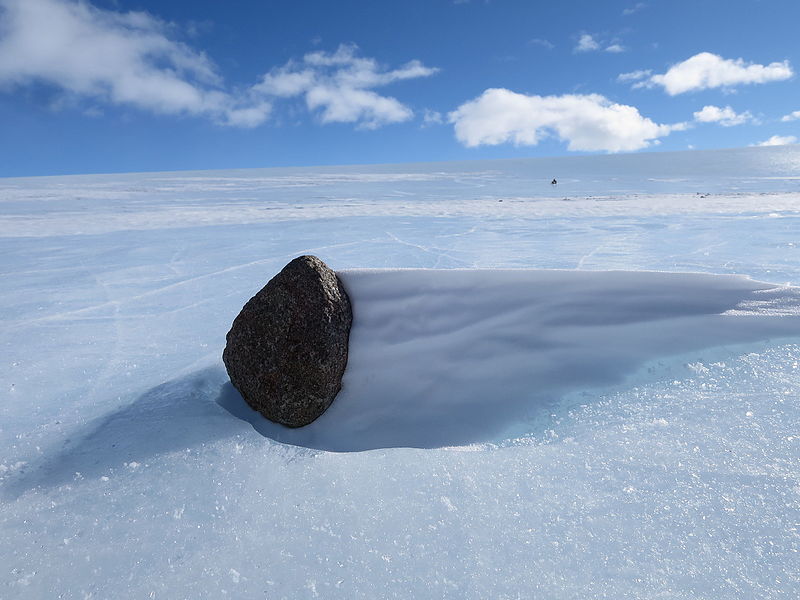Space rocks on planet Earth
As we mentioned earlier, a prominent place to gather space rocks is actually on Earth. Astronauts on planned space missions try to collect specific types of space rock, including meteorites. On Earth, we're at the mercy of meteoroids that happen to crash onto the surface of our planet. After such an impact, we get the chance to explore the debris field in the hopes of finding our own meteorites.
Space rock primer
‣ A meteoroid is a rocky or metallic projectile flying through space.
‣ ‣ A meteoroid becomes a meteor when it enters Earth's atmosphere.
‣ ‣ ‣ A meteor becomes a meteorite when it hits the Earth's surface.
Meteorites found on Earth are covered with a burnt fusion crust that's formed when the meteor travels through the Earth's atmosphere. The fusion crust that covers meteorites and space rocks makes it difficult to identify the type of rock until it's brought to the lab to be cleaned and analyzed.
Where can we find space rocks on Earth?
Although meteorites might be found anywhere on our planet, hot and cold deserts like those found in Northwest Africa and Antarctica are major spots for finding meteorites. Antarctica is a good location to search for meteorites because the black color of the fusion crust stands out against blue glacier ice. In other areas, meteorites might be obscured by vegetation, blend in with the ground, or look like other common rocks or debris in the area.

Antarctica also offers a unique, constant, dry, and cold climate that helps preserve the organic chemicals in meteorites. In other areas, shifts in temperature and precipitation, along with the impact of humans in the area, make the rock sample less likely to be preserved over time. In meteorite research, a high degree of preservation gives us a clearer understanding of the rock's original composition.
Read more about Antarctic meteorites.